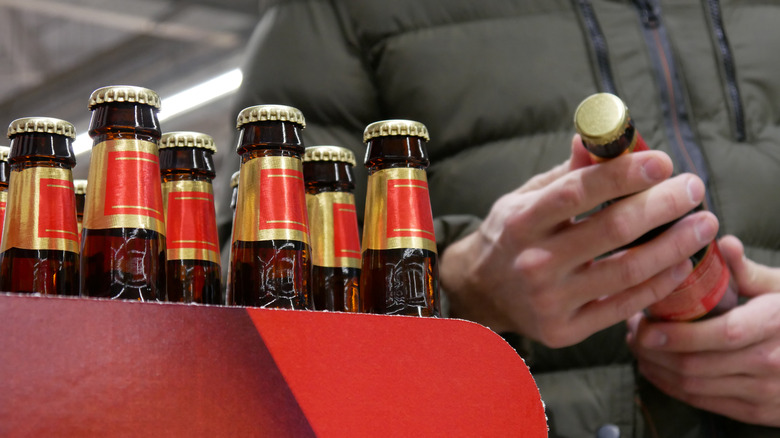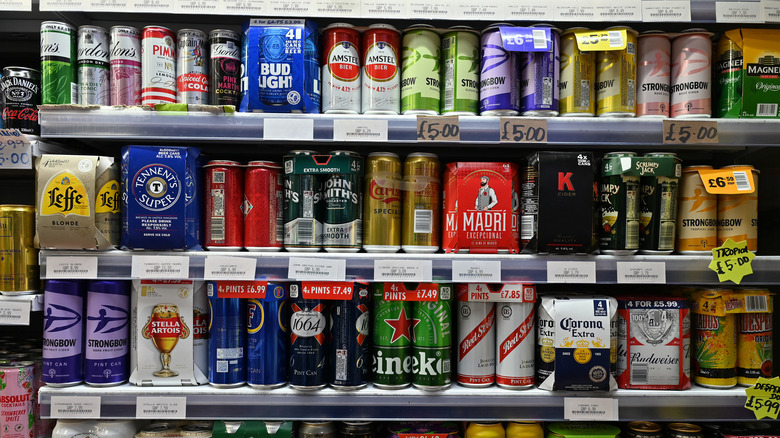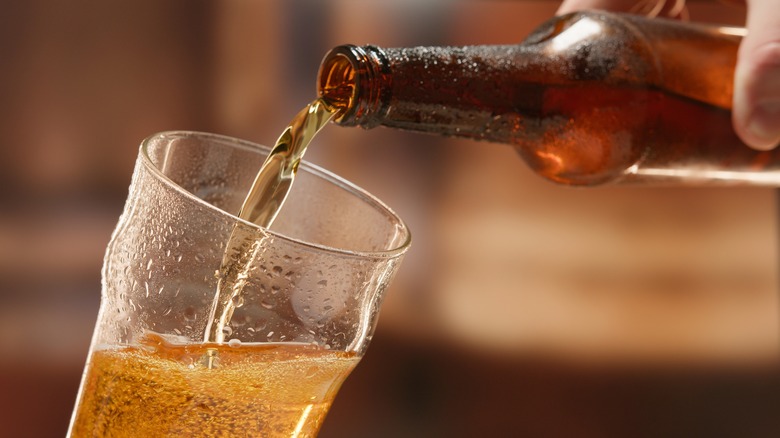The Beer Freshness Label You Need To Be Wary Of
It's evident that the refrigerated items at the grocery store are best enjoyed fresh. We put leafy greens and dairy products right into the refrigerator at home and use them straight away. However, this 'better when fresh' approach also applies to other products in your grocery store, such as beer coolers. The flavorful ingredients in beer, like hops and fresh malt, start to lose their luster after long periods of sitting on the shelf. Some flavors, especially the fruity and herbal qualities of hops, will disappear altogether after just a couple of weeks.
So you want the freshest beer at the store, but how do you find it? The tricky thing about buying beer fresh is that the "enjoy by" dates printed on some bottles aren't consistent. Some breweries use a date that marks 90 days after the beer was bottled, which is pretty fresh for beer! But other breweries use dates six months or more from the packaging date. Adding to the confusion, certain beers will have dates printed in hard-to-understand codes or no date at all! Luckily, there are clues other than bottle dates that can help you determine the freshness of your favorite brew.
Tricks to finding the freshest beers at the store
Since fresher beer is better beer, some breweries like Sierra Nevada and Boulevard Brewing print the "packaged on" date clearly on their bottles and cans, which is more helpful than the "enjoy by" date featured on other varieties. One trick for decoding dates on your bottle is understanding Julian Date Coding. This method of dating bottles is more popular in Europe, but some American breweries have adopted it. It's a four-digit code, where the first three digits represent the day of the year, and the fourth digit is the last number of the year. For example, 032 4 would mean a beer was bottled on the 32nd day of the year — February 1, 2024 — and 222 3 would mean it was packaged on the 222nd day of the year — August 11, 2023. Rather than doing the math on days, you can use a Julian Date Code converter.
If there is no date to decode, you can use context clues to determine how fresh a beer is. Consider how close the brewery is to the store you're shopping in. Could the beer get to the store quickly? Contemplate how much beer the store sells. Is it likely to sit on the shelf for a while? To decode "enjoy by" dates, search the internet to see if the brewery shares its shelf life parameters.
Certain beer styles benefit more from freshness than others
There are dozens of different types of beer to understand, and some age better than others. Beers with higher alcohol content (above 6% abv) and fewer hops maintain their freshness on the shelf for longer. Though there are differences between stout and porter beer, those and Belgian beer all age especially well. Even if some of their hoppy flavors disappear with age, they each have plenty of malty characters that cover the effects of age.
When it comes to beer styles with lots of hop flavors, you should do your best to find them fresh. Hops provide tropical, floral, herbal, and fruity character to styles like IPA, double IPA, and American pale ales. These flavors are pungent and intense when the beer is fresh from the brew house but fade quickly. Hops are a green leafy cone. You can think of their flavors as being similar to fresh herbs. The fresh basil has a vibrant, bright flavor the first day you bring it home from the store, but as the days pass, its taste shifts and becomes less complex and intense. Hops' flavor follows the same trajectory but over a longer time span. That's why hoppy beers should be cracked open within 90 days of their bottling date.


